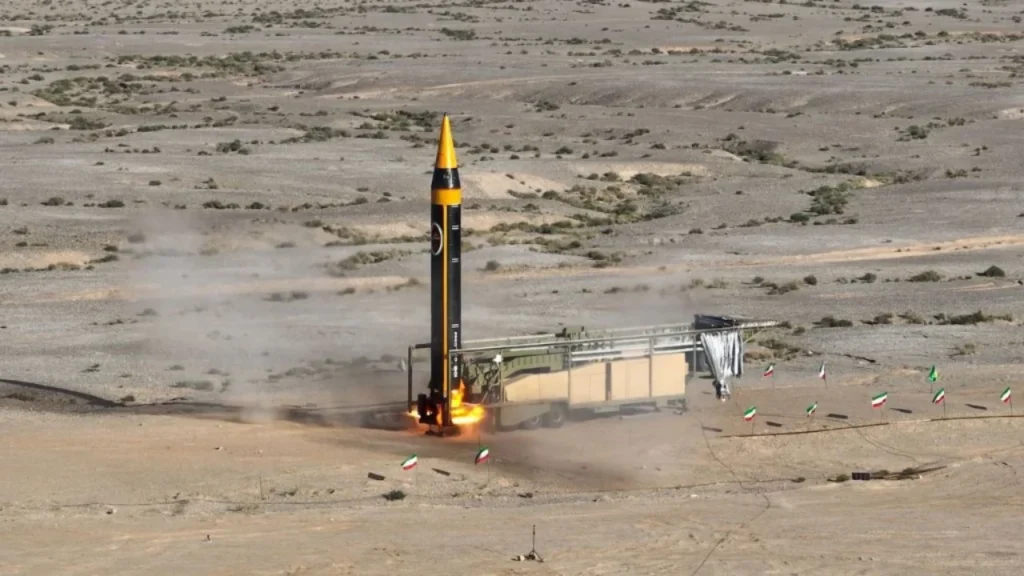The Khoramshahr-4 Missile is Iran’s newest addition to its medium-range ballistic missile arsenal. First unveiled in 2023 and tested through 2024-2025, it boasts advanced features that reflect years of indigenous R&D and military innovation Iran Khoramshahr-4 missile shows a bold shift in regional defense dynamics.
A New Era in Middle Eastern Missile Tech?
In a world of growing military tensions and tech-fueled power plays, Iran’s Khoramshahr-4 missile signals a bold strategic leap. This fourth-generation ballistic missile isn’t just another upgrade — it’s a clear message to rivals and a showcase of Iran’s evolving defense capabilities.
But what exactly is the Khoramshahr-4? Why does it matter in 2025? And how could it shape geopolitical stability in the Middle East?
What Is the Khoramshahr-4 Missile?
The Khoramshahr-4 is Iran’s newest addition to its medium-range ballistic missile arsenal. First unveiled in 2023 and tested through 2024-2025, it boasts advanced features that reflect years of indigenous R&D and military innovation.
Key Specifications:
- Range: Up to 2,000 km (1,242 miles)
- Payload: Over 1,500 kg (potential for multiple warheads)
- Launch Type: Road-mobile, liquid-fueled
- Accuracy: Claimed improvements in targeting with advanced guidance
Named after the city of Khorramshahr, which played a pivotal role in the Iran-Iraq War, the missile symbolizes both military pride and technological resilience.
Why It’s More Than Just a Missile
Unlike its earlier versions, the Khoramshahr-4 integrates satellite-guided navigation, a more compact design, and shorter prep time — making it harder to detect and neutralize.
Iran claims it can prepare the missile for launch in under 12 minutes. In a region where rapid-response capability is everything, this matters.
Strategic Implications:
- Deterrence: It boosts Iran’s ability to counter threats from regional adversaries like Israel or Saudi Arabia.
- Reach: Its 2,000 km range covers all of the Middle East and parts of Europe.
- Survivability: Mobile launchers make it more survivable against preemptive strikes.

Technology Behind the Missile
Iranian media reports that the missile uses an advanced precision guidance system, possibly modeled after Russian and North Korean tech. Its warhead has also been redesigned to reduce drag and evade missile defense systems like the Israeli Iron Dome or the U.S. THAAD system.
Major Technological Enhancements:
- Reentry Shielding: Better survivability on atmospheric reentry.
- Guidance System: Likely blends inertial navigation with satellite support.
- Engine Efficiency: New propulsion system improves thrust-to-weight ratio.
Iranian engineers are reportedly working on solid-fuel variants, which would further reduce launch prep time and increase tactical flexibility.
Global Reaction and Geopolitical Tensions
Unsurprisingly, the Khoramshahr-4 has sparked concern in Washington, Tel Aviv, and Brussels. The U.S. has called it “a destabilizing factor,” while the EU warns it could violate UN Resolution 2231, which restricts Iran’s missile program.
Israel, in particular, views this development as a red line — with officials hinting at potential pre-emptive countermeasures if they detect deployment.
Yet, for Iran, this is not just about offense — it’s about deterrence, sovereignty, and defense autonomy.
Real-World Impact: What This Means for 2025
With the Khoramshahr-4 now entering active deployment, the balance of power in the region could shift. Military analysts expect this missile to feature in any potential conflict scenarios involving Iran, the Gulf, or Western allies.
Possible Outcomes:
- Increased arms race in the Middle East
- Renewed focus on missile defense systems
- Bigger role for space-based surveillance to track mobile launchers
Whether Iran’s claims about the Khoramshahr-4 are entirely accurate remains debated, but what’s clear is that it’s a powerful symbol of regional military evolution.
Final Thoughts: Is the Khoramshahr-4 a Game-Changer?
In a post-pandemic, post-Afghanistan world, regional powers are looking inward, investing in self-reliance. Iran’s Khoramshahr-4 is a strong indicator of that mindset. While diplomacy remains the best way forward, deterrence is now the language spoken more fluently across the Middle East.







